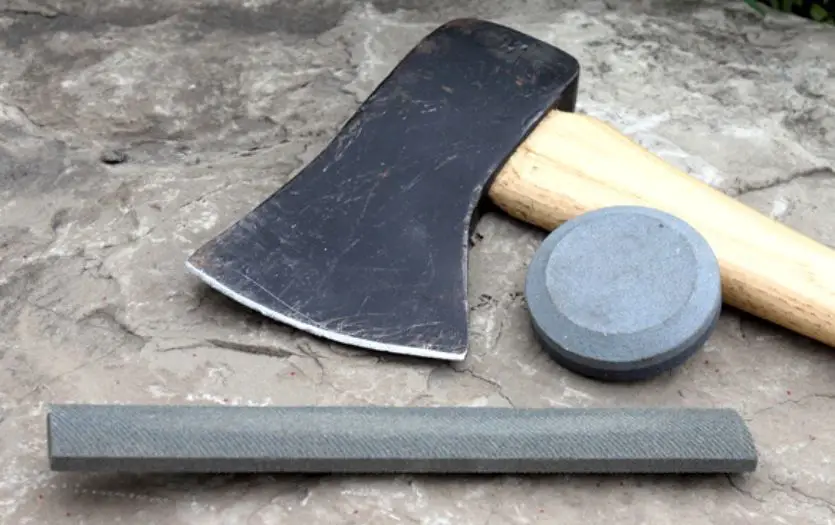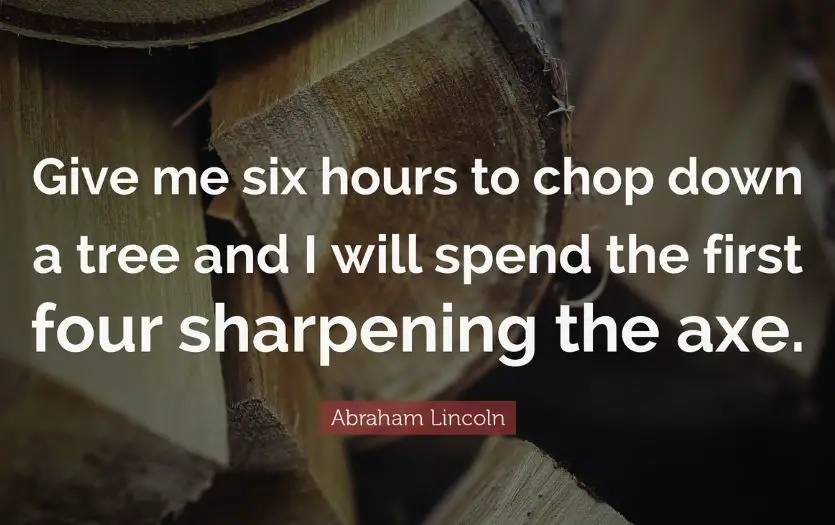Stop Hacking Away at Trees: Learn How to Sharpen an Axe Like a Pro
Learn how to sharpen and maintain your axe with our step-by-step guide. From honing to cleaning, we cover everything you need to know to keep your axe in top condition. Don't forget to check out our article on the best camping axes for all your outdoor needs.
If you're a frequent axe user, whether it's for chopping wood or any other purpose, you know that a sharp axe is essential for efficient and safe work. But, let's be honest, keeping your axe sharp can be a daunting task.
That's why we're here to help! This article provides an overview of how to sharpen an axe the right way, with step-by-step instructions from start to finish, common mistakes to avoid, and also some more tips and tricks.
So, grab your axe, and let's get started!
Guide to Sharpening an Axe

Sharpening an axe can seem like a daunting task, but with the right tools and techniques, it's actually quite simple. In this section, we'll walk you through the process step-by-step, so you can keep your axe in top shape.
1. Preparing your axe:
Before you can begin sharpening your axe, it is important that you first prepare it by cleaning off any rust or dirt buildup along with inspecting the blade for chips or pitting on its surface. You should also check that all bolts are securely tightened on your handle before beginning.
Use a wire brush or a scraper to remove any rust or buildup on the blade. This will make it easier to see any nicks or burrs that need to be removed during the sharpening process.
2. Choosing the right tools:
To properly sharpen your axe blade you will need a file or stone as well as a honing oil or wax as lubricants. Depending on your preference and experience level you can choose either a single or double-sided file/stone. You can also use a knife sharpener to sharpen your axe.
Choose a tool that feels comfortable for you to use and that is the right size for your axe. Just be sure that whatever you use allows for the quick removal of material from both sides of the blade at once.
3. Techniques for Honing and Sharpening the Blade
Once you have your tools, it's time to begin sharpening. Start by focusing on honing rather than trying to immediately create a super fine edge – doing so too quickly can cause undue damage to your blade given its delicate state at this point in its life cycle.
You should also make sure you're going with the grain whenever possible when honing or sharpening in order to ensure an ideally smooth finish throughout.
Additionally, lighter strokes tend to do much better than heavy ones — they will be less likely to warp or distort your blade while still achieving excellent results in terms of performance. Hold the axe at approximately a 20-degree angle to the sharpening surface and use long strokes to create a smooth, even edge. Use the same number of strokes on each side.
It's important to maintain this angle throughout the sharpening process to ensure a consistent edge. You can use honing stone for honing the edge and file for removing the burrs.
4. Tips for Maintaining a Sharp Edge
Regularly stoning your axe lightly every few weeks will help maintain a sharp edge, but there are a few other things you can do to prolong the life of your axe. Store your axe in a dry, cool place to prevent rust, and apply a light coat of oil to the blade after sharpening to protect it from moisture and thereby rust build-up.
Use a high-quality oil such as mineral oil or linseed oil, and apply a thin layer to the blade after cleaning. Also, consider investing in a quality sheath if possible too – these can help keep out dust particles or other contaminants which may dull their edges faster than anticipated.
By following these steps, you'll be able to sharpen your axe like a pro in no time. Remember to be patient and take your time, and you'll be able to enjoy the many benefits of a sharp axe. As always, safety should be your top priority, so be sure to use caution and proper protective gear when sharpening your axe.
Also, check out the short video :
Also, check out our article on the Best Ice Fishing Gloves
Common Mistakes To Avoid
When attempting to sharpen an axe yourself at home there are several common mistakes that are often made leading directly to subpar results.
Over-sharpening:
It is possible to over-sharpen an axe, making it razor thin along its cutting edge which can cause damage when striking wood thus leading one back to square one having no edge at all!
Therefore monitor closely during each step of your process and take frequent breaks rather than just grinding away incessantly until finished with no regard for consistency across different parts within a given area being worked upon – where evenness counts most when producing quality results!
Not using the correct tools:
Not only can incorrect tools damage or destroy an otherwise perfect edge but also they can lead users to get injured through lack of proper safety measures being taken beforehand like donning protective gear such as goggles while grinding!
Therefore make sure all supplies used match up accordingly before continuing onward towards completion goals set forth prior to commencing any action moves here - always go prepared while doing work involving blades like those contained within axes!
Not maintaining edges:
Another mistake often made is not regularly performing maintenance actions after having already created an edge via sharpening techniques. Without doing so then eventual wear will occur leading to edges dulling faster than expected – leading back again where we started from far too soon.
By taking good care of your axe, you can feel assured that it will serve its purpose for a long time. Even if this requires investing extra effort beyond what was initially planned when starting out, the success, in the end, makes it worth it!
Final Thoughts
Well, there you have it! Sharpening and maintaining your axe might seem like a daunting task, but with a little bit of knowledge and practice, it's a breeze. Remember, a sharp and well-maintained axe makes your work easier, faster, and safer.
But if your axe is old and beyond repair, or if you simply want a new camping axe, be sure to check out our article on the best camping axes. We've done the research and found the best options for you. From camping to wood chopping, these are the best options for all of your needs.


